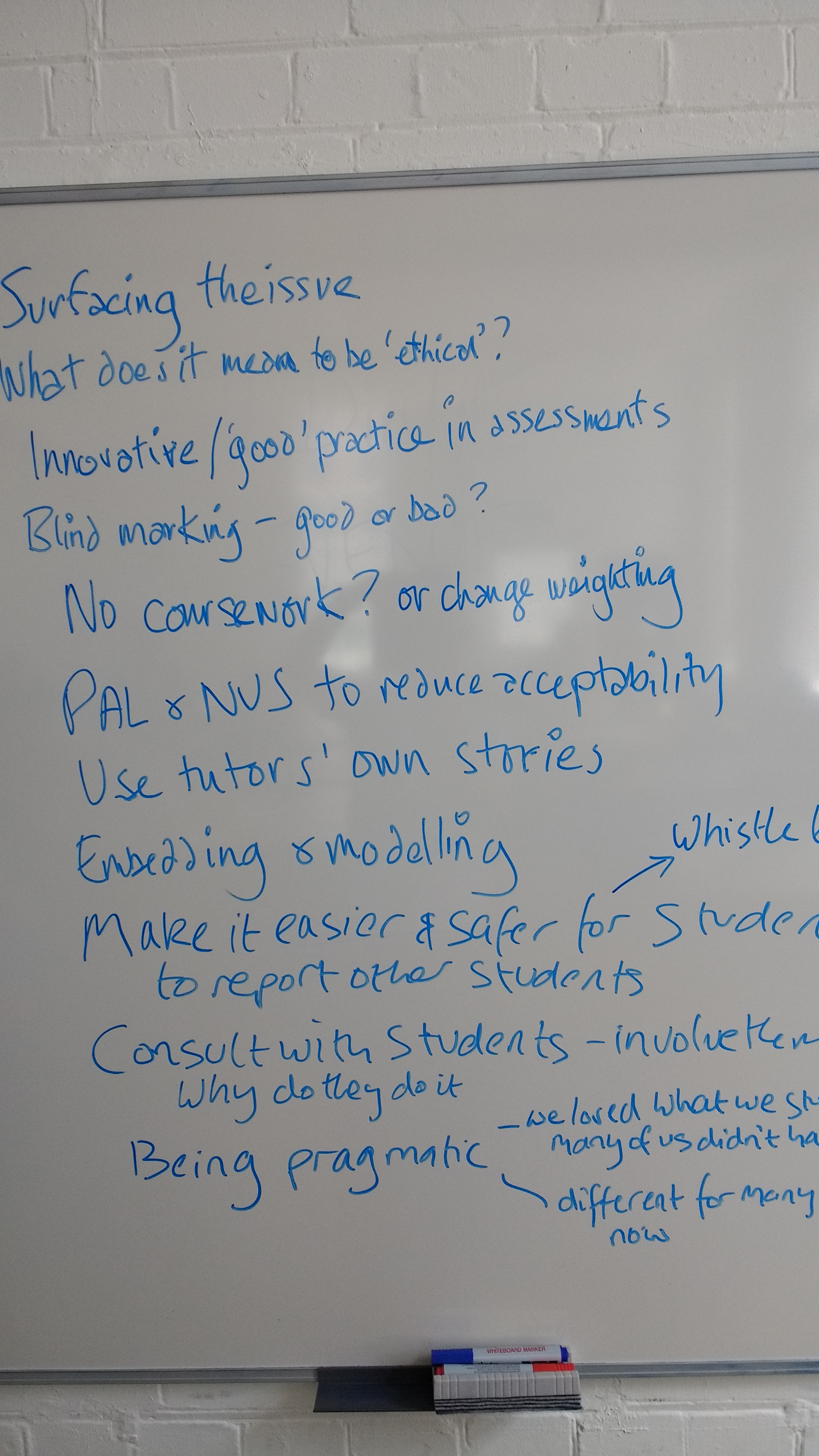Plagiarism, and in particular the recent burgeoning of so-called essay mills, was the theme of the ALDinHE (London & south-east region) event hosted by the University of Reading on July 22nd 2016.
I had the pleasure of attending this lively and stimulating day of presentations and discussion at the University’s verdant London Road campus, a spot I‘d previously only known as the venue for the graduation ceremony of my first degree all the way back in 1995. A trip down memory lane then.
Reminiscences aside, here are some of the points I took away from the presentations and discussion.
Plagiarism is particularly prevalent in “high stakes” assignments, such as when there are only a few assignments on a given module (Myers & Shahabudin, 2016). For me, this confirms that any comprehensive approach to reducing academic misconduct has to include a review of assessment design and course design.
The marketisation of HE has likely also played a part in the rise of academic misconduct. High fees equal high stakes. Students can feel they can’t afford to fail, and the cost of the essay mill can seem small in comparison to the course fee. This, of course, doesn’t make academic misconduct acceptable.
Some plagiarism is wilful, while other cases stem from a genuine misunderstanding of (UK) academic practice.
Teaching around plagiarism and referencing mustn’t be too scary as this can be counter-productive – actually encouraging students to use essay mills for fear of “getting it wrong”. Academic integrity workshops need careful, non-threatening titles, such as How to put your reading list into your writing.
At least when teaching, we should use positive language (“good scholarship”, “academic integrity”) instead of negative language (“plagiarism”). We should show students how good academic skills (e.g. summarising) will be of use to them in their professional lives after university.
We can encourage students to see themselves as accessing an existing body of knowledge – one that they can, and should, pay some respect to. Plagiarism often starts with poor note-taking skills, so let’s teach methods such as SQ3R more widely (Saville, 2016).
The internet has clearly played a part in the rise of academic misconduct. On the web, there is often a culture of re-sharing without acknowledging. Certainly, in online assessments (e.g. blog posts) staff tend to see students giving fewer citations than in traditional assignments such as essays.
Another thought on the impact of the internet: when uploading their work to the VLE (e.g. Moodle), students might well tick the box that says “This is all my own work” etc, but most of us are used to ticking online t&c boxes without actually reading the t&c!
Name-blind assessment seems a good idea from an equal opportunities point of view, yet it makes it harder to spot academic misconduct, e.g. unrealistic work from a particular student (Myers & Shahabudin, 2016).
A possible solution to plagiarism is use of more vivas; it’s very difficult for a student convincingly to answer questions about a piece of work they haven’t written themselves. In a viva, students can be asked questions such as: “How did you go about producing this work?” Using vivas is, of course, very staff intensive though (Davis, 2016).
References
Davis M (2016) Checking the integrity of student work [Presentation to ALDinHE London & south-east region event] 22nd July 2016
Myers J and Shahabudin K (2016) Trouble at t’mill: how should learning developers respond to essay mills? [Presentation to ALDinHE London & south-east region event] 22nd July 2016
Saville J (2016) Encouraging good habits: tackling reading and note taking to improve academic integrity [Presentation to ALDinHE London & south-east region event] 22nd July 2016
A note on MY referencing
I’ve referenced any ideas I’ve used that were presented in writing at the event, but it hasn’t been possible to reference all the points made verbally during the fast-moving group discussion. This difficulty in itself exemplifies some of the issues raised in this post. Thank you to any participant who made a contribution that found its way into this blog post.



Thanks David, I agree it’s helpful to take a more positive non-threatening approach – encouraging students to improve their academic writing rather than just avoid plagiarism.
Interesting too that QAA has produced a report today on “essay mills” which it sees as a growing threat!
Sally